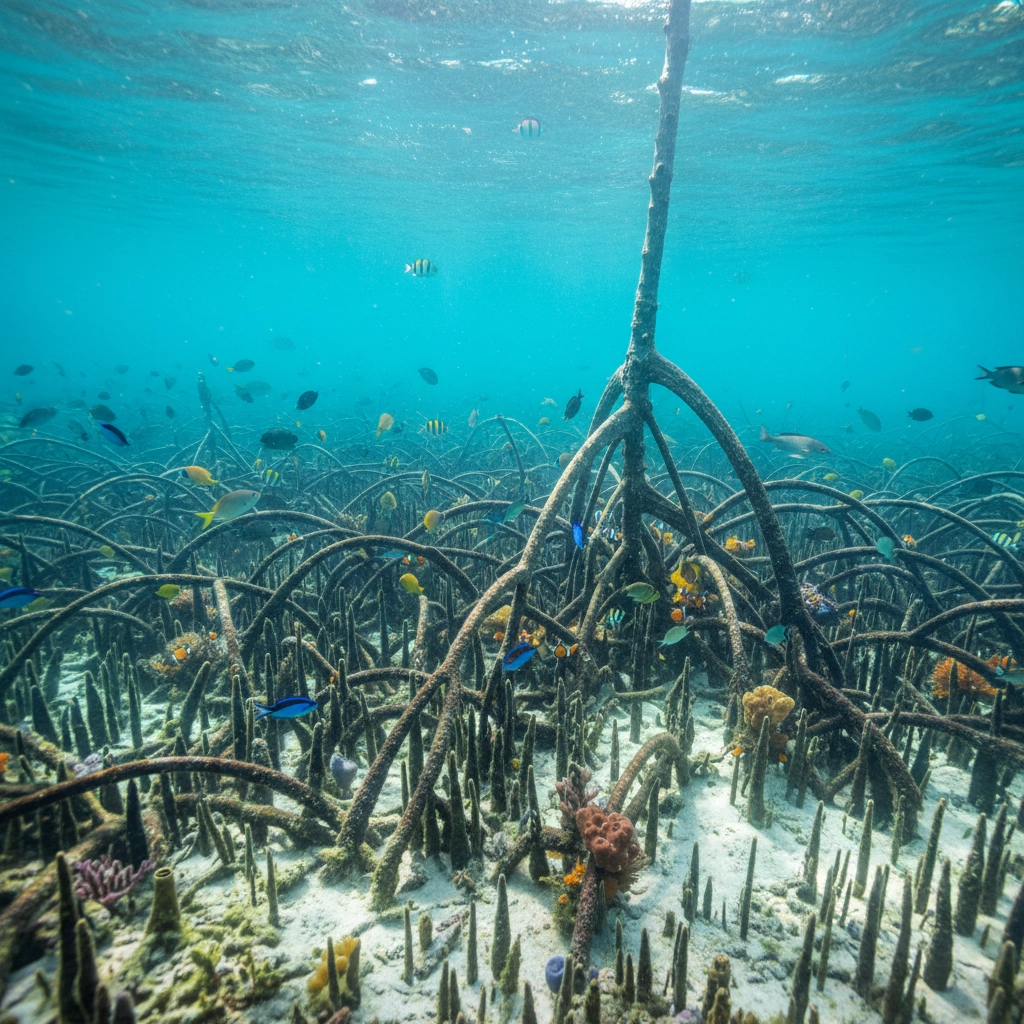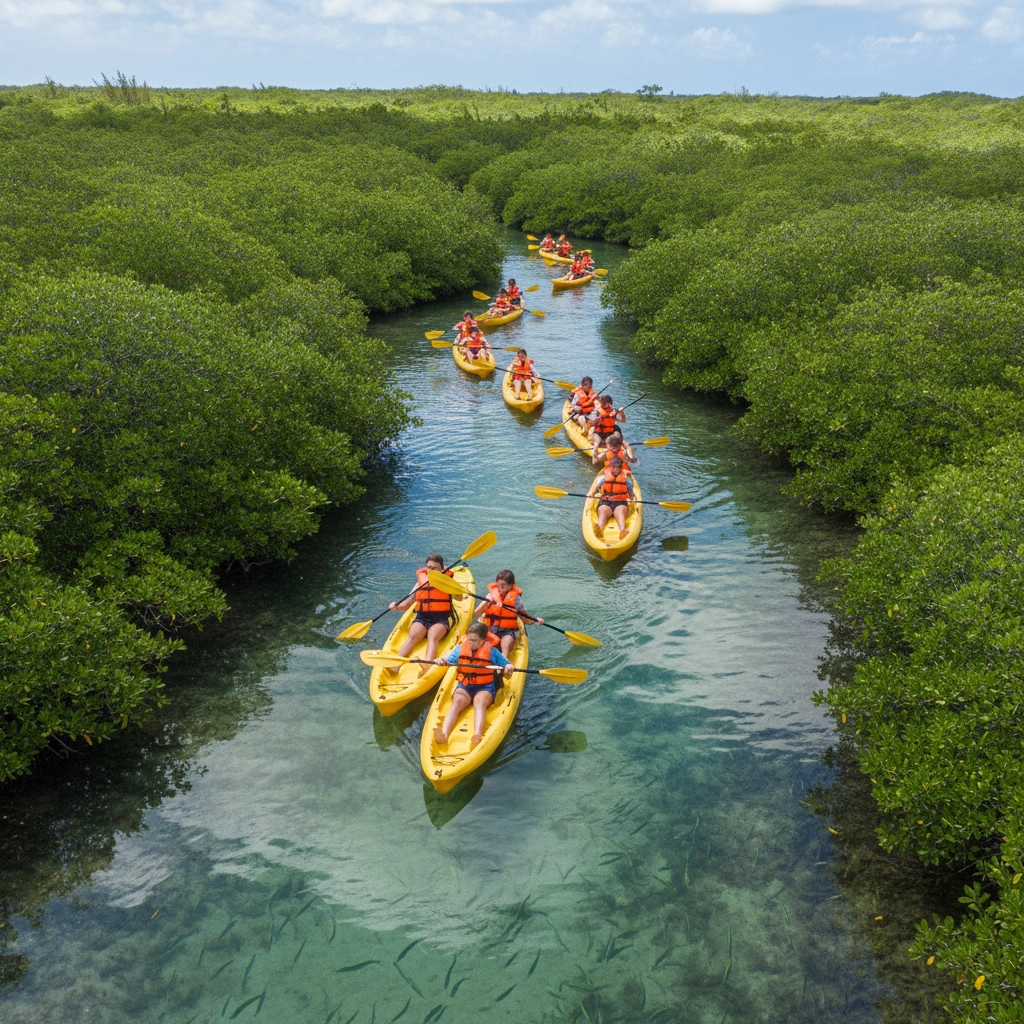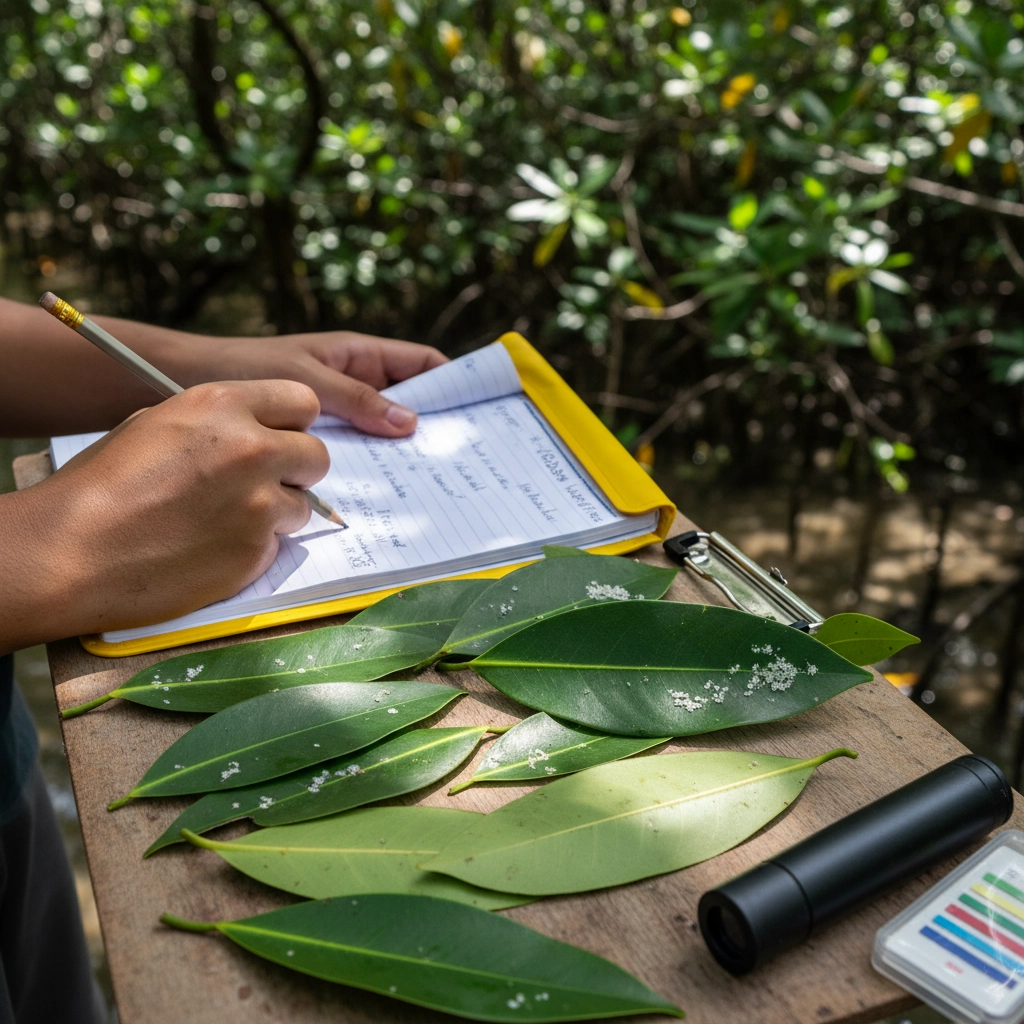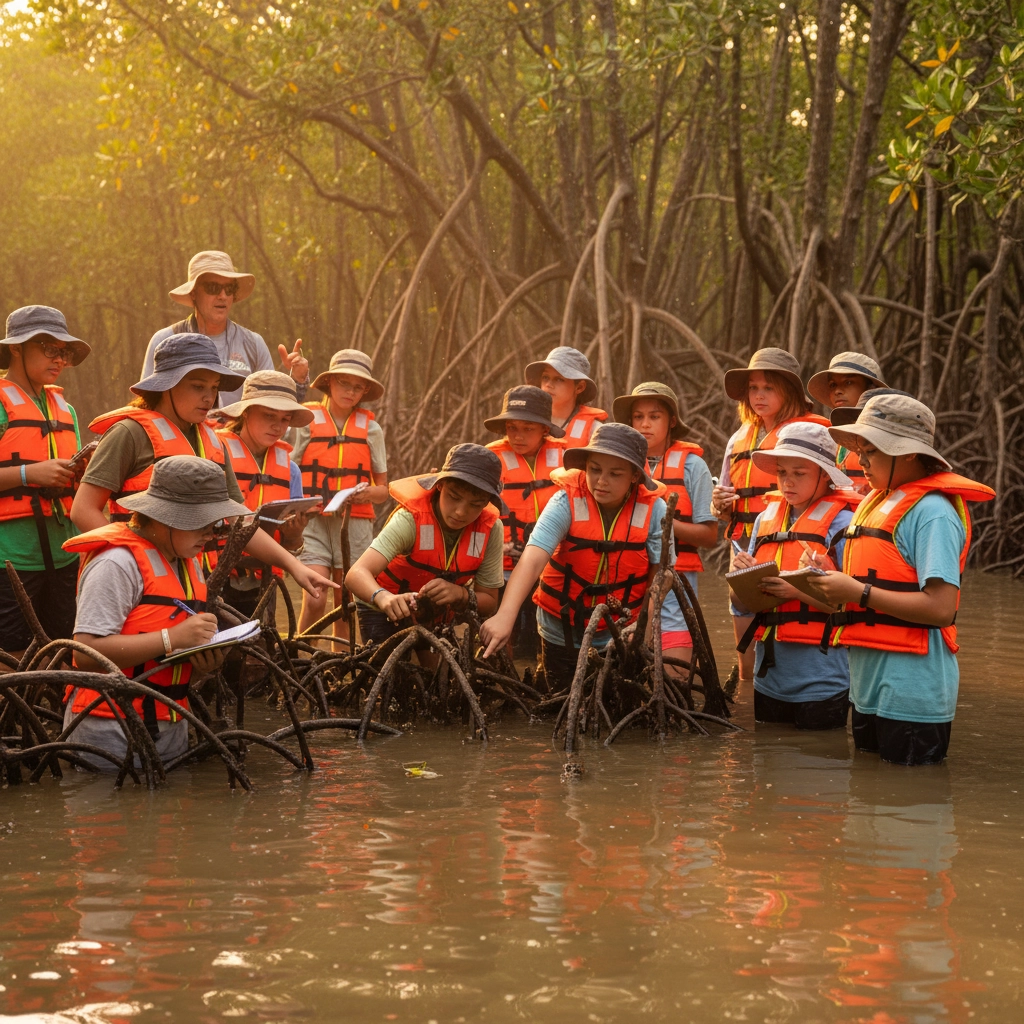Kayaking the Mangrove Habitats of the Florida Keys: Middle School Science & Tree Diversity
- Caleb Mullenix
- 14 hours ago
- 5 min read
Establishing meaningful connections between classroom learning and real-world ecosystems is paramount for middle school science education. The mangrove forests of the Florida Keys provide an exceptional opportunity for students to engage in hands-on field research while exploring one of nature's most remarkable coastal ecosystems. Through guided kayaking expeditions, students can observe, identify, and study the four distinct mangrove species that define these subtropical wetlands.
Understanding the Four Mangrove Species of the Florida Keys
Successful field identification requires students to understand the unique characteristics that distinguish each mangrove species. Begin by teaching students to recognize the four primary mangrove types found throughout the Florida Keys ecosystem.
Red Mangroves (Rhizophora mangle) serve as the most recognizable species due to their distinctive prop root system. These reddish, arching roots extend from the trunk like natural stilts, providing stability in soft sediments while supplying oxygen to underwater root systems. Red mangroves typically occupy the shoreline's edge, where they withstand the harshest wave action and salt exposure. Students should observe how these trees can germinate seeds while still attached to the parent plant, creating fully developed seedlings before dispersal.
Black Mangroves (Avicennia germinans) display a contrasting root architecture featuring pneumatophores: finger-like projections that extend upward from buried roots. These "breathing roots" emerge from the soil like small pencils, allowing gas exchange in oxygen-poor sediments. Black mangroves typically grow behind red mangroves in slightly higher, less frequently flooded areas.

White Mangroves (Laguncularia racemosa) exhibit the most terrestrial appearance among the four species. These trees lack the prominent aerial root systems of their relatives, instead developing near the high-tide line where saltwater intrusion occurs less frequently. White mangroves feature distinctive salt-excreting glands on their leaves, visible as white crystalline deposits.
Buttonwood (Conocarpus erectus) represents the transitional species between mangrove and upland habitats. While technically not a true mangrove, buttonwood plays a crucial role in the ecosystem's structure. These trees grow in the highest elevations of the mangrove zone, where saltwater rarely reaches. Students can identify buttonwood by its button-like seed clusters and silvery-green leaves.
Kayaking as an Effective Field Study Method
Implementing kayaking expeditions allows students to access remote mangrove habitats that remain inaccessible by foot or traditional watercraft. Plan your expedition to include both open-water paddling and navigation through narrow mangrove tunnels, providing diverse observational opportunities.
Begin each expedition with proper safety briefing and equipment distribution. Ensure that all students understand paddling techniques, emergency procedures, and wildlife observation protocols. Emphasize the importance of maintaining quiet voices and slow movements to avoid disturbing wildlife populations.
Navigate through winding waterways that showcase the complete mangrove zonation pattern. Guide students to observe how species distribution changes from water's edge to upland transition zones. Encourage students to document water depth, salinity levels, and substrate composition at different sampling stations.

Hands-On Learning Activities and Data Collection
Structure your expedition to include systematic data collection that reinforces classroom learning objectives. Provide students with waterproof field notebooks, identification guides, and basic sampling equipment.
Tree Identification Stations: Establish multiple stopping points where students can safely exit kayaks to examine root systems, leaf structures, and reproductive features. Create identification worksheets that require students to sketch distinguishing characteristics and record GPS coordinates for each species encountered.
Water Quality Sampling: Distribute portable refractometers or conductivity meters to measure salinity levels at different locations. Students should record temperature, pH, and dissolved oxygen levels while correlating these measurements with observed species distributions.
Wildlife Documentation: Encourage students to maintain species observation logs, recording bird species, fish populations, and invertebrate communities associated with each mangrove zone. Provide underwater viewing boxes to facilitate observation of root-associated marine life.
Ecosystem Mapping: Assign student teams to create detailed habitat maps showing species distribution patterns, water flow directions, and human impact indicators. These maps become valuable reference materials for post-expedition classroom analysis.
Ecosystem Functions and Identification Techniques
Emphasize the critical ecosystem services that mangrove forests provide to coastal communities. Explain how these habitats serve as nursery grounds for commercially important fish species, natural barriers against storm surge, and carbon sequestration systems.
Teach students to recognize adaptation strategies that enable mangrove survival in challenging saltwater environments. Demonstrate salt excretion mechanisms, specialized root functions, and reproductive adaptations that distinguish mangroves from terrestrial forest communities.

Guide students through systematic identification processes using dichotomous keys specifically designed for mangrove species. Practice identification techniques in controlled settings before applying these skills during kayaking expeditions.
Address the interconnected relationships between mangrove forests, seagrass meadows, and coral reef systems. Explain how nutrients and organisms move between these habitats, creating the complex food webs that support Florida Keys biodiversity.
Safety Protocols and Risk Management
Implement comprehensive safety measures that address both aquatic hazards and wildlife encounters. Establish clear communication systems between instructor guides and student groups, including emergency whistle signals and radio protocols.
Provide detailed pre-expedition briefings covering weather conditions, tide schedules, and potential hazards specific to mangrove environments. Ensure that all participants understand proper behavior around wildlife, including manatees, dolphins, and various bird species.
Maintain appropriate group sizes that allow for effective supervision while minimizing environmental impact. Assign experienced chaperones to lead small kayaking groups, ensuring that struggling paddlers receive immediate assistance.
Create detailed emergency action plans that address various scenarios, including severe weather, equipment failure, and medical emergencies. Share emergency contact information with school administrators and parent groups before departure.
Appleseed Expeditions Integration and Educational Outcomes
Partner with Appleseed Expeditions to develop comprehensive mangrove ecology programs that align with Next Generation Science Standards for middle school life science curricula. These expeditions combine adventure-based learning with rigorous scientific investigation, creating memorable educational experiences that inspire long-term environmental stewardship.
Appleseed Expeditions provides expert naturalist guides who possess extensive knowledge of Florida Keys ecosystems and proven experience working with middle school groups. These professionals facilitate safe, educational kayaking expeditions while maintaining focus on curriculum objectives and learning outcomes.

Design pre-expedition classroom preparation sessions that introduce students to mangrove ecology concepts, identification techniques, and data collection methods. Provide post-expedition analysis opportunities where students can process field data, create presentations, and share discoveries with school communities.
Integrate service learning components that allow students to contribute meaningful data to ongoing mangrove research and conservation projects. Collaborate with local research institutions to ensure that student observations contribute to broader scientific understanding of these critical ecosystems.
Establish connections with marine science career professionals who can share expertise and inspire students to pursue environmental science pathways. These mentorship opportunities often prove instrumental in shaping students' academic and career interests.
Building Environmental Stewardship Through Direct Experience
Conclude each expedition by facilitating reflection sessions where students can process their observations and connect field experiences to broader environmental challenges. Encourage students to consider how human activities impact mangrove ecosystems and what actions they can take to support conservation efforts.
Provide opportunities for students to share their discoveries with family members and community groups, extending the educational impact beyond the classroom setting. These presentation experiences build communication skills while reinforcing scientific learning objectives.
The combination of kayaking adventure and scientific investigation creates powerful learning experiences that students remember long after returning to traditional classroom settings. Through direct observation and hands-on research, students develop deeper understanding of ecological principles while building appreciation for the natural world that surrounds them.
Ensure that your mangrove kayaking expeditions with Appleseed Expeditions provide students with transformative educational experiences that combine scientific rigor with environmental awareness, creating the foundation for lifelong environmental stewardship and scientific curiosity.



Comments